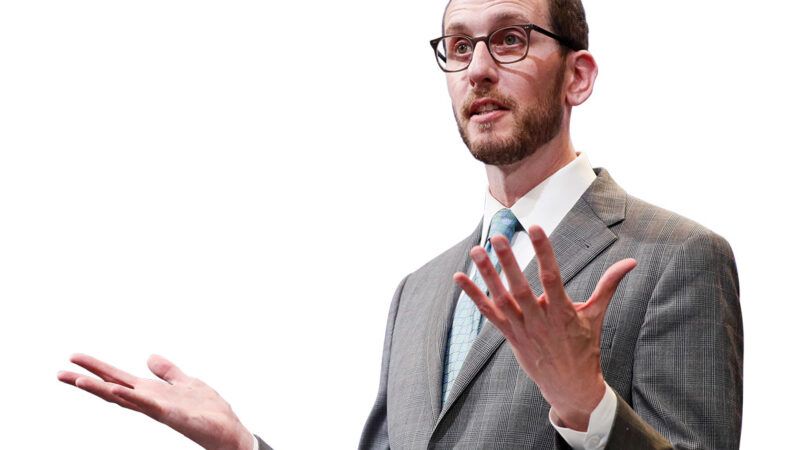Scott Wiener Is California's 'YIMBY' State Senator
The YIMBY Democrat wants to make it easier to build more housing in California's densest and most expensive cities.

In November, voters in San Francisco reelected California Sen. Scott Wiener, a Democrat, over his opponent, democratic socialist Jackie Fielder. Wiener is a YIMBY, which stands for "yes in my backyard." Unlike Fielder and many other powerful California Democrats, he believes that making it easier for private actors to build more housing in the state's densest and most expensive cities is key to relieving California's housing shortage.
One of Wiener's signature legislative attempts would have preempted local control of zoning to allow mid-rise apartments near transit and to allow fourplexes almost everywhere. Those efforts didn't clear the Senate, but a smaller pro-development piece of legislation, Senate Bill 10, passed out of the Senate and might've passed the California Assembly had unrelated political wrangling not killed a host of bills at the end of the last state legislative session.
Reason's Christian Britschgi spoke to Wiener in January about his plans to reform housing regulations.
Q: How do you see the COVID-19 pandemic affecting the need for upzoning bills like S.B. 10?
A: I think it has no impact. Because when you talk about upzoning, it's a longer-term thing. When you change zoning, it's so that over time we'll produce more housing in a sustainable way. Sadly, housing production is not a fast process, even under the best of circumstances. Now's the time to change the rules, to modernize them, and to also acknowledge that we need to move away from sprawl development and focus more on new infill development.
Q: Sprawl was actually a pretty easy way to get affordable housing.
A: One of the reasons why sprawl development is more affordable is because we have made it so hard and expensive to build infill development. I'm not saying that if we revolutionized how we are doing all housing that they're ever going to be equal in cost, but the differential that we're seeing now can be reduced significantly.
I'm not saying we should end all expansion in terms of where housing goes. We have to just be mindful about climate and about wildfires. Almost half of new housing we built in California in the last 30 years has been in a wildfire zone.
Q: S.B. 10 upzones for a particular number of units, as opposed to a set building height, as in your previous bills. Why is that?
A: The rationale behind S.B. 10 is that we want cities to upzone. There are plenty of cities that want to upzone, and we sometimes mandate them to upzone, but then we make it really, really hard for them to do it. It can take five, 10 years. We have to do an [environmental impact report]. They're going to get sued on it.
So the idea [behind S.B. 10] was that when a city wants to upzone in a way that's very impactful but a little bit less intensive—four, eight, 10 units—and if they're doing it in a jobs transit area or infill area, then we don't need to apply environmental analysis for that.
We're not talking about gigantic buildings that might have some other impacts that need to be taken into account. We're talking about the more light-touch density. So I think on balance, you can make a real argument that that kind of housing does not need the same kind of environmental scrutiny.
Q: One of the interesting things about the pandemic is that it has lowered rent in places like San Francisco as people have left dense urban areas. Does that take the pressure off zoning reform?
A: I think that all of this has a temporary nature to it. Yes, there'll be more work-from-home flexibility than before. Is it going to be the revolutionizing of work? No one's going to be going to the office anymore? I don't think so.
Regardless, we still have to have sustainable land use, whether people are working from home or going into work. If everyone's living in areas where you'd have to drive long distances to go anywhere, that's not sustainable. We still need housing for people and we still have the fundamental question of, Where should we put that housing?
This interview has been condensed and edited for style and clarity.
Rent Free is a weekly newsletter from Christian Britschgi on urbanism and the fight for less regulation, more housing, more property rights, and more freedom in America's cities.



Show Comments (25)